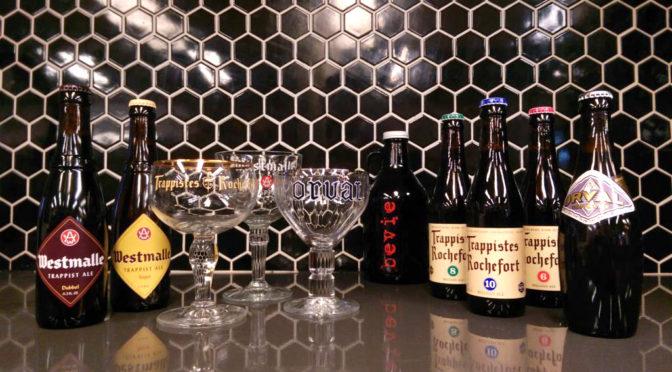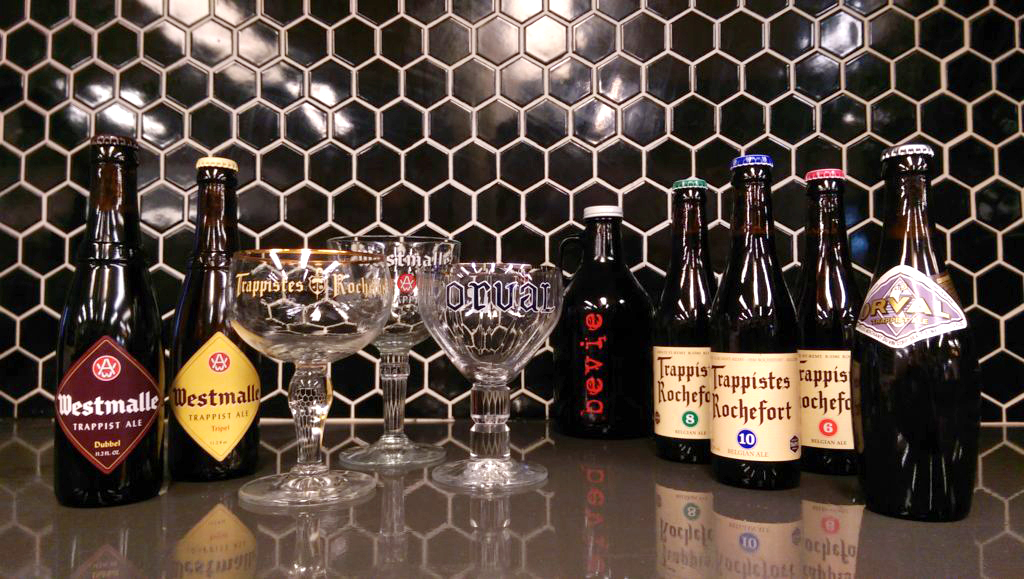Orval Day is here!
Celebrate deliciously at the Beverage Warehouse with special guest Jeff Baker (Farrell Distributing) on Saturday, March 25th, from 10a-12p during our Orval Day & Trappist Beer Tasting!
The goblets arrived… the beer is waiting… the only thing missing is you so stop in and take part in this international day of celebrating a historic (and most delicious) craft beer.
Orval Trappist Ale
Sunset-orange color; a fruity and slightly acidic bouquet, firm body, profound hop bitterness, and long, dry finish. 6.9% ABV
About the Orval Trappist Brewery
Brewed and bottle-conditioned at Notre Dame d’Orval monastery, founded around 1070 AD in the pastoral Belgian countryside. Three different malts, two types of hops, Belgian candi sugar, complex fermentation with multiple yeasts, dry-hopping and bottle conditioning all contribute to great character and complexity. This vintage-dated and unique beer can be cellared up to five years.
According to legend, Princess Matilda was passing through this region in about 1070 with her retinue. She stopped at a clear spring and trailed her hand in the water – and her wedding ring, a gift of her recently-deceased husband, slipped off her finger and sank. Distraught, she knelt and prayed fervently for its return . . . and a trout swam to the surface with the ring in its mouth, returning it to her. She is said to have claimed “Truly, this is a golden valley!” (French: Or = gold; val = valley) She gave the land to the church, and the trout with the gold ring can be seen to this day in the Orval logo.
Westmalle – Est. 1794
> In the early days of Belgian brewing, before universal literacy, two “x-marks” on a cask may have distinguished a “second beer style” made by a monastic brewery for outside sales, generally stronger than the original variety brewed for the monks’ consumption. Brewing historians think these marks may have been the root of two current beer styles: dubbels (doubles) and tripels (triples).
> Dubbels are dark ales of firm strength and body; Westmalle Trappist Dubbel is amber-brown, has notes of caramel, earth and fruit, with a balanced body, subtle yeast character, and a refined, malty finish. 7.0% abv.
> The Abbey of Westmalle that produced the first strong, pale-colored tripel (or triple), in 1934, and today Westmalle Trappist Tripel is the benchmark for the tripel style. It is a glowing golden color, very rich, full-bodied, and elegantly complex with elusive hints of tropical fruit in the bouquet; firm bitterness and snappy, aromatic hop finish keep the flavor elements balanced. 9.5% abv.
Rochefort – Est. 1230
The beers of Abbaye St-Remy, Rochefort, are packed with extreme flavors but each is melded into perfect balance.
> Rochefort 6, sometimes called “Red Cap,” has a firm body with an unrestrained malty flavor and long finish; the bouquet holds fruity
yeast notes that suggest fresh-baked dark bread; 7.5% abv.
> Rochefort 8, or “Green Cap,” is a full-bodied, rich ale with alcohol at 9.2% abv and compelling flavors of spice, bittersweet chocolate, figs and leather.
> Rochefort 10, “Blue Cap,” packs sauvage, incendiary flavors around a bold 11.3 % abv — notes of earth, fire, port wine, violets, and possibly tropical fruit, all in cascading layers. The colors range from brown to deep blackish-brown, and all three have soft red highlights. The numerical names of the Rochefort beers – “6,” “8,” and “10” – come from “Belgian degrees,” a traditional, historical means of measuring gravity (or, the sweetness of the wort before fermentation) and determining the final strength of the beer.


